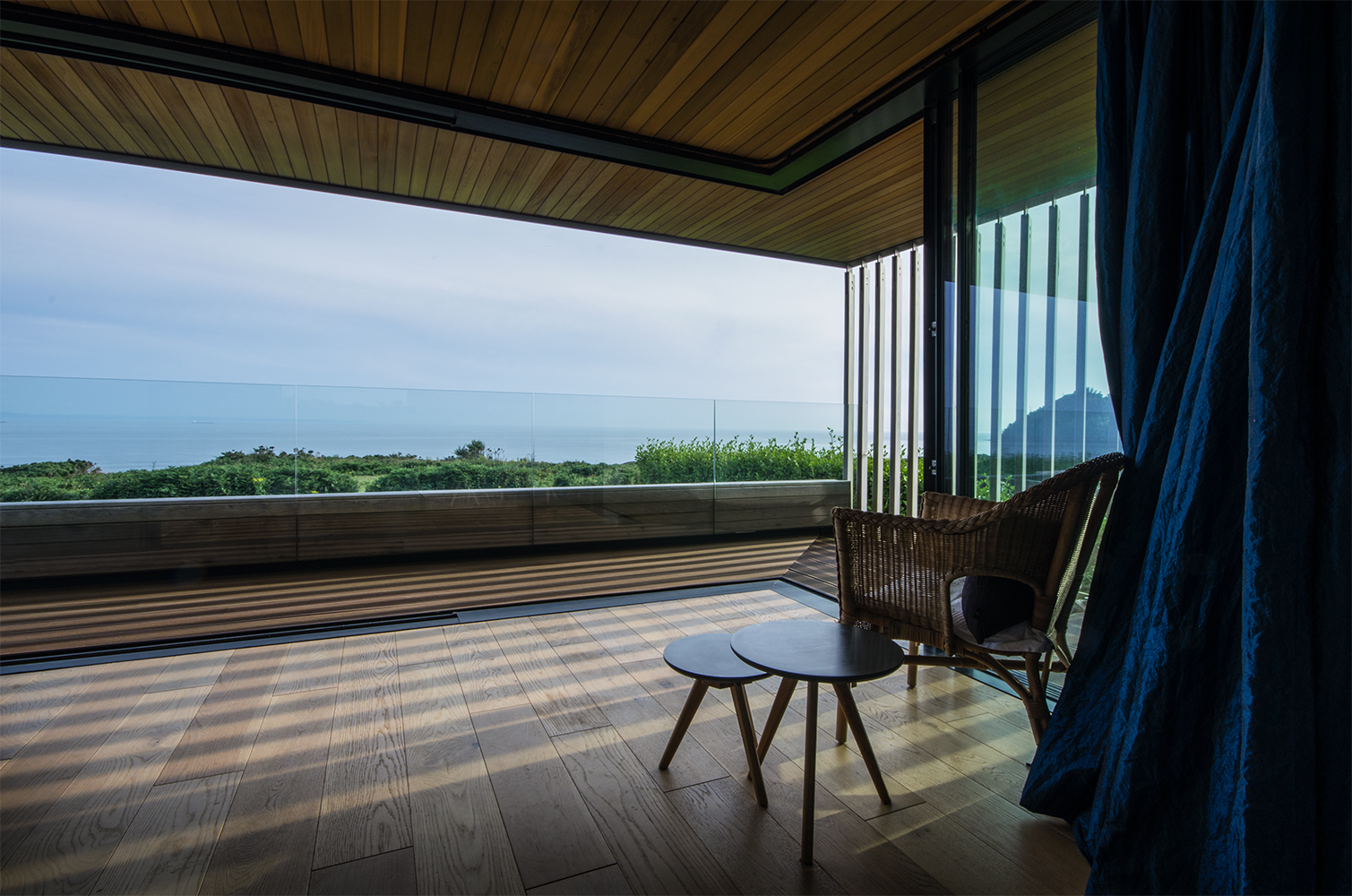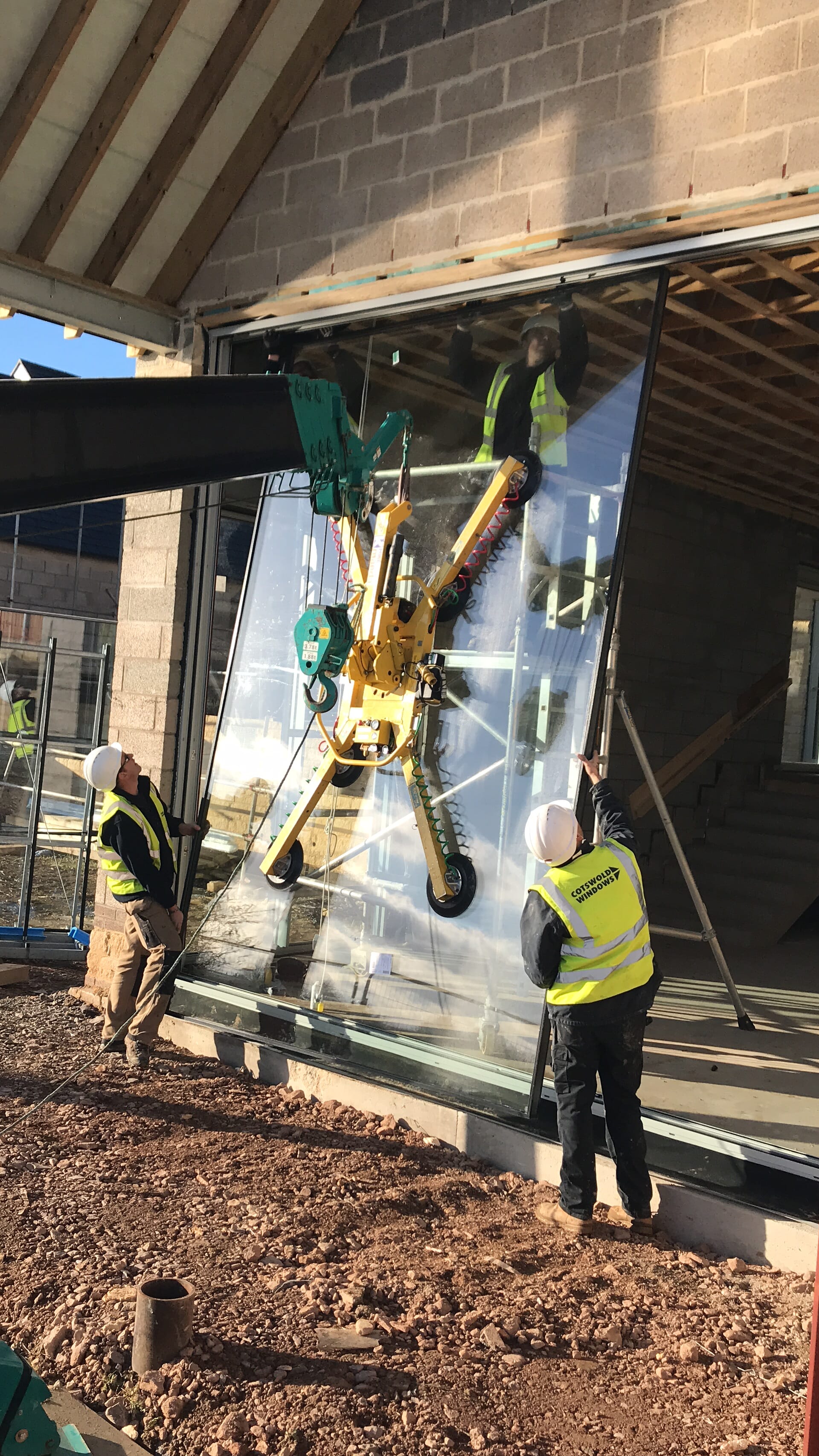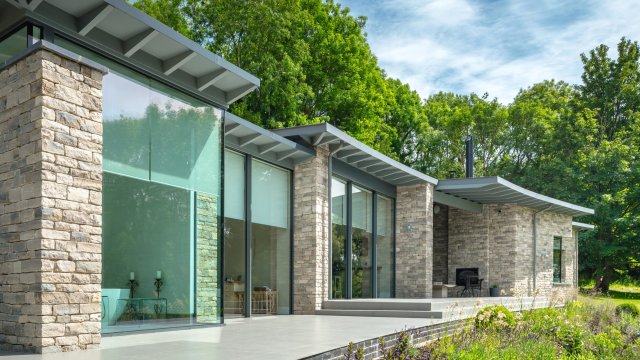
Large glass installation: balancing aesthetics and practicality
A guide on how to install large glass panels safely without losing the design focus
Oversized glazing has become one of the most sought-after features in contemporary architecture. Whether as expansive sliding doors opening onto a terrace or vast fixed panes framing a countryside view, large glass window design creates an immediate visual impact.
At Cotswold Windows, we regularly work with architects, designers and clients who want to incorporate large glass installations into their projects. While the visual benefits are clear, there are several important structural, practical and environmental considerations that need to be addressed in the planning stages.
This article outlines the key factors to consider when specifying maximum-sized glazing, drawing on our experience with high-performance systems such as Sky-Frame and MHB steel windows and doors.

Understanding the scale of large glass window design
One of the first challenges with oversized glazing is aligning the architectural vision with the physical realities. The perception of size can vary dramatically between a scaled drawing and a finished installation. A pane of glass that looks right on paper may feel unexpectedly imposing once in place, particularly when dealing with units several metres in height or width.
Sky-Frame’s sliding systems, for example, can accommodate single panes up to 3 metres by 6 metres as a standard specification – but they can go even larger. In fact, the sky’s the limit in terms of single panel glass size. While the aesthetic potential is significant, large glass installations of these dimensions come with added practical complexities which need to be considered beforehand.
1. Structural considerations and glass specification
As the size of the glazing increases, so too does the thickness – and therefore the weight – of the glass. A typical domestic double-glazed unit would be made from 4mm sheet glass. In contrast, large-format panels may require 8, 10, 12 or even 16.8mm sheet thickness, depending on location and load requirements. The weight of glass increases exponentially with size and thickness, which has a direct impact on both installation and structural support.
For reference, standard glass weighs approximately 20kg per square metre. Larger installations can exceed 80kg per square metre, with individual panels often reaching 500kg or more. These loads must be factored into the building’s structural design, requiring reinforcement of supporting steelwork and careful planning of access through the building envelope.
At Cotswold Windows, we collaborate closely with structural engineers to ensure all load-bearing requirements are correctly calculated and incorporated into the building design at an early stage. This is particularly important in exposed or elevated locations, where wind loading and lateral forces place additional pressure on the glass and its framing.
2. Large glass installation and site logistics
One of the most commonly underestimated aspects of oversized glazing is the complexity of delivery and installation. The logistics involved in safely transporting and positioning large panes of glass are substantial. Weight thresholds typically dictate the need for cranes or specialist lifting equipment, and once the weight of a unit reaches 120kg or more, mechanical handling becomes essential from a health and safety perspective.
Each site must be individually assessed to determine how the glazing will be moved from delivery to installation. At Cotswold Windows, we won’t give a precise quote for an installation until we see the location and assess the access needs. Each project has its own requirements and we use a range of machinery to ensure glass is installed safely and precisely. This can be anything from all-terrain trolleys to mini glazing robots to specialist contract cranes with a lifting team that is fully insured should anything go wrong.
No matter how difficult the project appears, we can usually create a solution. One project in Chelsea, for example, required a large crane to lower a smaller crane into a basement in order for the glass to be installed safely. However, this also highlights the importance of having a replacement strategy should anything happen to your glass in the future – if the initial installation involved this ‘big crane little crane dance’, it is likely that any future work would require the same technique. It is worth giving some consideration to how you might replace glass should the need ever arise.
3. Wind load, weather exposure and environmental forces
In addition to static structural loads, large glazing systems are subject to dynamic environmental forces – particularly wind loading. This is especially relevant for buildings in exposed rural or coastal locations, on hilltops, or at high elevations.
We often see grand plans for large glass designs in all types of locations but it is our job to point out some of the considerations on how to balance the aesthetics with the practicalities, which means taking wind load calculations into account.
Wind loading must be calculated using location-specific data, including site altitude, topography, proximity to the coast and whether it’s an urban, suburban or rural setting. Using this data, engineers calculate pressure in kilonewtons per square metre and determine the required glass thickness and frame reinforcement accordingly.
It is worth noting that as glazed units increase in size, performance values such as air permeability, watertightness and thermal insulation can be affected. Test results are usually based on standard laboratory sizes, and larger configurations may not perform to the same level without modification. It is inevitably more difficult to make really large glass doors watertight, because of these environmental factors.
At Cotswold Windows, we assess each design individually and advise on the best frame profiles, seals, and configurations to maintain high performance, even under challenging environmental conditions. For example, a design may specify a large three-panel glazed door, but if the building is located on top of a hill subject to wind gusts and driving rain we might advise that this isn’t the best idea. We would recommend alternative designs or configurations on how the doors would open (for example, having only one panel opening and fixing the other two) and we would reinforce the profiles to suit the building and its location.
4. Long-term maintenance and replacement strategy
While the visual appeal of oversized glazing is undeniable, the potential long-term implications of maintenance and replacement should not be overlooked. Despite rigorous manufacturing standards and quality controls – including heat-soak testing for Sky-Frame glass to detect potential nickel sulphide inclusions – no system is entirely immune to damage or failure over time.
Impact from building movement, thermal stress or even accidental damage (such as a stone chip from garden equipment) can lead to breakage, either immediately or delayed. Planning for such scenarios is essential. Homeowners should ensure their insurance covers large-format glazing, and they should also consider how replacement units would be installed after the surrounding landscaping is complete.
Reinstalling a 300kg panel may require the same level of lifting equipment and access as the original installation – something that can be extremely disruptive and costly if not accounted for from the outset. As part of our specification process, we advise to clients put in place a realistic strategy for replacement, including access routes and contingency planning.

Do you need advice for a large glass installation project?
At Cotswold Windows, we specialise in the specification and delivery of large-format glazing systems, working with industry-leading products such as Sky-Frame and MHB. Our role is to guide clients through each stage of the process – from initial concept to final installation – ensuring that every detail is considered, every risk is mitigated, and every design vision is brought to life with precision and care. Talk to our team to discuss your large glass installation requirements and how we can help.